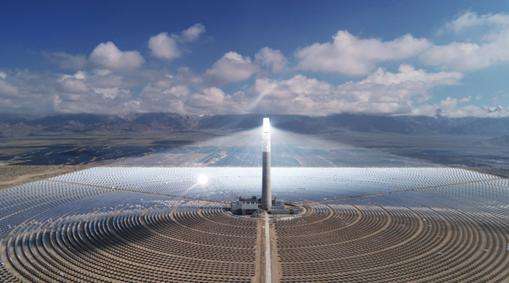Off-grid and grid-connected are two different modes of operation in solar power generation systems.
Off-grid systems provide an independent and reliable power supply solution.
Grid systems provide continuous power and connected electricity to the public; bi-directional grid communication.
The differences are mainly reflected in the following five aspects:
1 Connection method:
Off- . grid system: Off-grid systems are independent of the public grid and are not connected to the grid.
Grid-connected system: The grid-connected system communicates with the power grid by connecting to the public power grid.
2. Power supply method: Off-grid system: Off-grid system is self-sufficient and does not depend on the gridpublic electric utility, provide electrical energy through a solar energy production system.
Grid-connected system: The grid-connected system mainly relies on the public power grid for power supply. The solar power generation system provides part or all of the electrical energy when solar power generation is insufficient. the necessary electrical energy can be obtained from the network.
3. Energy storage and energy use: Off-grid system: Off-grid systems generally need to be equipped with energy storage equipment (such as battery packs), which can store excess electricity produced during the day and use it at night, on cloudy days or during periods of peak electricity consumption.
Network-connected systems: Network-connected systems generally do not require equipmentnt energy storage. Excess solar energy will be fed into the public grid for use by other users, or sold to power companies as feed-in tariff subsidies.
4. Scope of use and scenarios: Off-grid system: Off-grid system is suitable for remote areas and places that cannot access the public. power grid, such as rural areas, mountains and islands, etc.
Grid-connected system: Grid-connected system is mainly used in urban and industrial energy consumption, which can meet large-scale energy demand and realize energy flow bidirectional.
5. Stability and reliability: Off-grid system: Off-grid system has high stability and reliability for power supply and does not need to be affected by grid fluctuations and outagesto public electricity.
Grid-connected system: The grid-connected system relies on the stable operation of the public power grid and may be affected in the event of a breakdown or power outage of the public power grid.
Off-grid system:
An off-grid system refers to a solar power generation system that is independently established and is not not connected to the public network. . It mainly includes photovoltaic solar panels, batteries, inverters and other equipment. Off-grid systems are often used in remote areas or places without public grid access. By converting solar energy into electricity and storing it in batteries, users can use electricity independently without a public grid.
Independence: off-grid systems operate independently and do not depend onu public power grid for power supply and can be used in places where there is no power grid.
Energy storage function: Off-grid systems generally need to be equipped with energy storage equipment (such as battery banks) to store electricity remaining generated by solar energy during the day while using it at night or on cloudy days.
Self-sufficient: Off-grid systems are able to fully meet a user's energy needs without the need to purchase additional energy from the public grid .
Suitable for remote areas:Off-grid systems are often used in remote areas, such as mountainous areas, rural areas or islands, to provide reliable power supply in places that cannot access the public electricity network.
Grid Tied System:
Grid Tied System refers to the connection of the solar power generation system to the utility grid and the connection of solar energy production. system to the public network. The power supply from the public network is combined. The grid-connected system mainly consists of photovoltaic solar panels, inverters and power metering devices. Solar power generation can not only meet users' energy needs, but excess energy can also be fed back into the public grid for use by other users. Grid-connected systems are generally widely used in urban and industrial energy applications.
Public Grid Connection: The grid connected system connects the solar power generation system to the public grid and interconnects it with the gridto electric.
Continuous power supply: The grid connected system can ensure continuous power supply when solar power generation is insufficient, the required power can be obtained from the grid audience.
Inject excess electricity into the power grid or sell electricity: When solar energy production exceeds demand, excess energy can be reinjected into the public network for use by other users or; excess electricity can be sold. Give it to the electricity company and benefit from the grid electricity price subsidy.
Grid monitoring and energy metering: Grid-connected systems are typically equipped with energy metering devices to monitor solar power generation and electricity consumption of the network.














